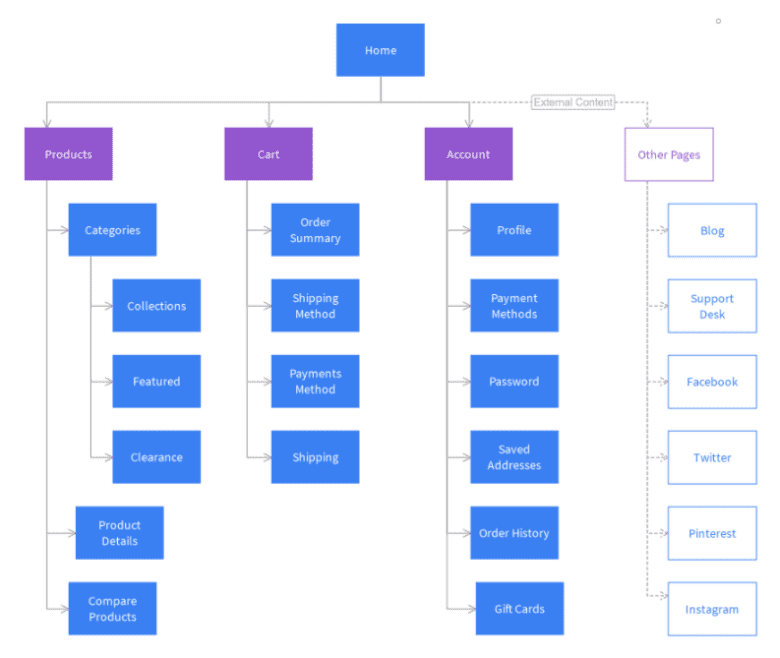Sitemap strategies vary by website type to optimize search engine crawling and indexing effectively.
E-commerce Sites
- Structure: Use a sitemap index to split URLs into logical groups such as products, categories, collections, and blog posts. For example, Gymshark separates pages, collections, and products into different sitemaps, and Ruggable divides its sitemap into products, pages, collections, and blog posts.
- Best Practices:
- Include every available product URL.
- Remove or deprioritize discontinued products to conserve crawl budget.
- Exclude URLs with filter combinations or parameters that cause duplicate content.
- Use hreflang tags in sitemaps if serving multiple languages or countries.
- For very large catalogs, create separate sitemaps per category and link them via a sitemap index.
- Optimization Tips:
- Separate product and category pages into distinct sitemaps for clarity.
- Prioritize important URLs to ensure key pages are crawled first.
- Segment sitemaps for easier management and resubmission after updates.
Blogs
- Structure: Typically simpler, blogs can have sitemaps that include posts, pages, and categories.
- Update Frequency: Sitemaps should be updated whenever new posts are published or old content is removed.
- Additional Sitemaps: Consider using news sitemaps if the blog publishes time-sensitive or frequently updated content to improve visibility in news-related search results.
News Sites
- Specialized News Sitemaps: Use news sitemaps to highlight recently published articles, which helps search engines prioritize timely content.
- Metadata: Include publication date and keywords relevant to news content.
- Applicability: Not only for major news outlets; any site with time-sensitive articles can benefit from news sitemaps.
- Update Frequency: Must be updated frequently to reflect new articles and changes.
General Best Practices Across All Types
- Keep sitemaps well-organized and adhere to XML schema standards.
- Limit each sitemap to 50,000 URLs or less; use sitemap indexes for larger sites.
- Include metadata such as last modified date, change frequency, and priority to guide search engines on crawling importance and timing.
- Use free tools like Google XML Sitemap Generator or CMS plugins (e.g., Yoast SEO) to create and maintain sitemaps.
By tailoring sitemap structure and maintenance to the website type—complex segmented sitemaps for e-commerce, straightforward updated sitemaps for blogs, and timely news sitemaps for news sites—webmasters can improve search engine crawling efficiency and SEO performance.


















WebSeoSG offers the highest quality website traffic services in Singapore. We provide a variety of traffic services for our clients, including website traffic, desktop traffic, mobile traffic, Google traffic, search traffic, eCommerce traffic, YouTube traffic, and TikTok traffic. Our website boasts a 100% customer satisfaction rate, so you can confidently purchase large amounts of SEO traffic online. For just 40 SGD per month, you can immediately increase website traffic, improve SEO performance, and boost sales!
Having trouble choosing a traffic package? Contact us, and our staff will assist you.
Free consultation